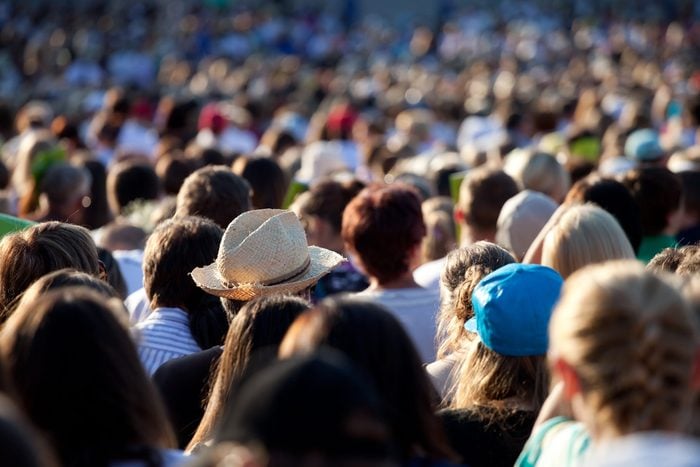
What is the biggest city in the world?
Two thousand years ago, there were a mere 170 million people living on Earth. The human race has been on an upward trajectory ever since—logging in at 7.7 billion people in 2019 and projected to reach 10 billion by the 22nd century.
Our burgeoning population presents many challenges, according to the United Nations, especially as countries look to hit sustainability goals by 2030. Basically, the more humans there are on Earth, the more resources such as food, water, and the land we need, the more resources we take away from other species, and the more waste we generate.
There is some good news. Population increases are slowing down and in some countries, and elsewhere, some populations are shrinking. Still, there are other places that are virtually bursting at the seams. We’re looking at the 20 most populous metropolitan areas on the planet.
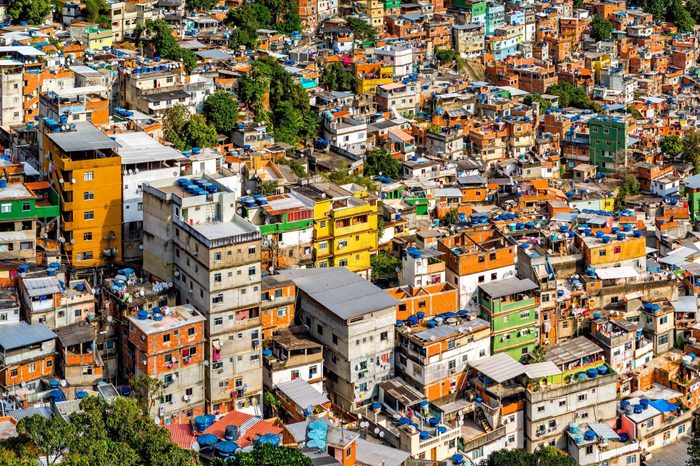
20. Rio de Janeiro, Brazil
Current population: 13,458,075 people
Almost 5,400 people per square kilometer are packed into this urban area on Brazil’s coast. It’s one of the most popular travel destinations in South America, and yet over 20 percent of its residents live in impoverished conditions in almost 800 favelas, or so-called “substandard” districts around town. On the plus side, though, population growth is slowing. In 2019, Rio de Janeiro was the 19th most populated city in the world.
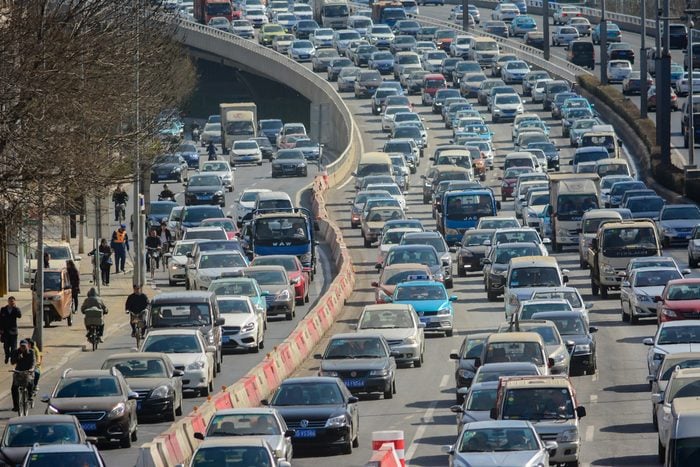
19. Tianjin, China
Current population: 13,589,078 people
The population of this 12,000-square-kilometer port city in Northeastern China expanded by a whopping 188 percent between the years of 1953 and 1982. Luckily, growth has slowed considerably since then—it expanded a mere 1.4 percent between 2019 and 2020—but it’s showing no signs of leveling off or even decreasing. Manufacturing is the largest industry in the city and accounts for its speedy and consistent growth.
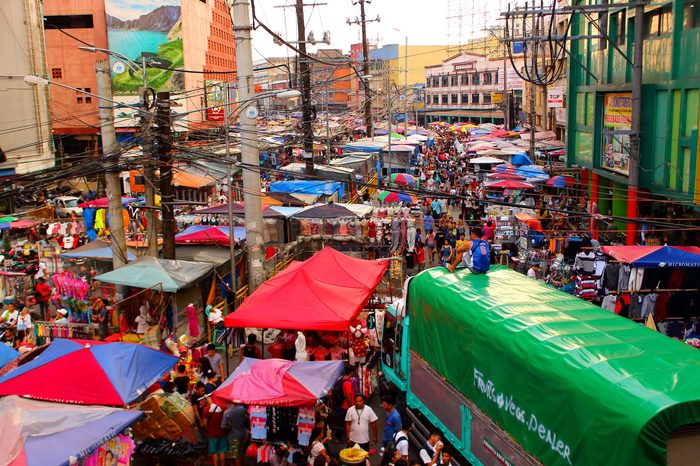
18. Manila, Philippines
Current population: 13,923,452 people
Although growth in the urban population of Manila has actually slowed down over the years as the surrounding suburbs have seen an uptick in residents, that doesn’t mean the city is getting any less crowded. In fact, Manila is the world’s most densely populated city with 111,002 people per square mile. Plus, with many poor migrants moving into Manila from rural areas, Manila’s projected increasing growth rates are certain to put further strains on resources.
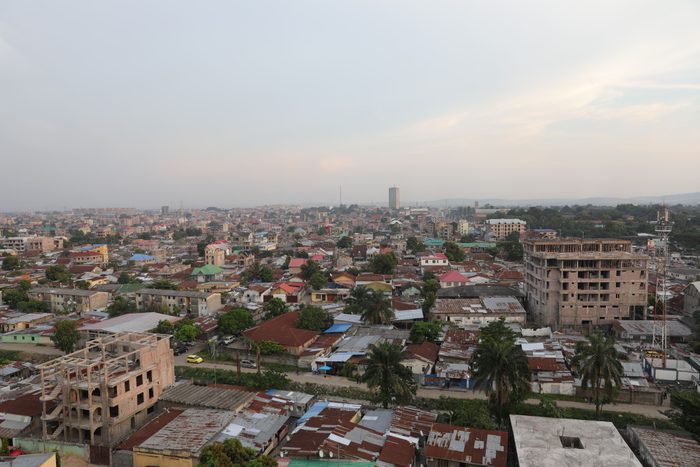
17. Kinshasa, Democratic Republic of Congo
Current population: 14,342,439 people
Kinshasa did not make the top 20 list in 2019 but rapidly jumped to 17th place. The capital city is growing quickly, with a 4.3 percent growth between 2019 and 2020. The 14.3 million number is even more incredible when you consider that in 1950, the population of this city was a mere 201,905 people. With rapid population growth, sports betting operators are flocking to Congo. Kinshasa’s population may seem enormous, but it’s nothing compared to the population of the entire world. What’s even more impressive is that the city has more French speakers than Paris.
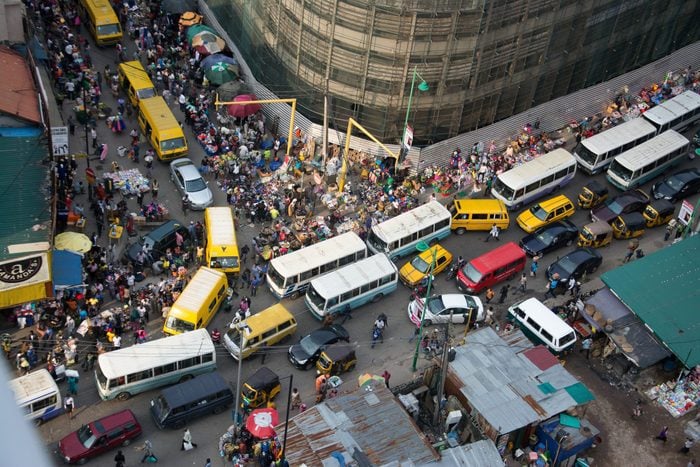
16. Lagos, Nigeria
Current population: 14,368,332 people
This port city—and the largest city in Africa—originated on the islands of the protected Lagos Lagoon, but has since expanded some 50-plus kilometers inland and now encompasses about 452 square kilometers. Its diverse population is represented by about 250 groups, many of which have emigrated both from the Nigerian countryside and from surrounding countries. The vast majority of residents—66 percent—live in slum conditions. The economic differences between countries across the globe also mean that one dollar will get you 50 different things around the world.
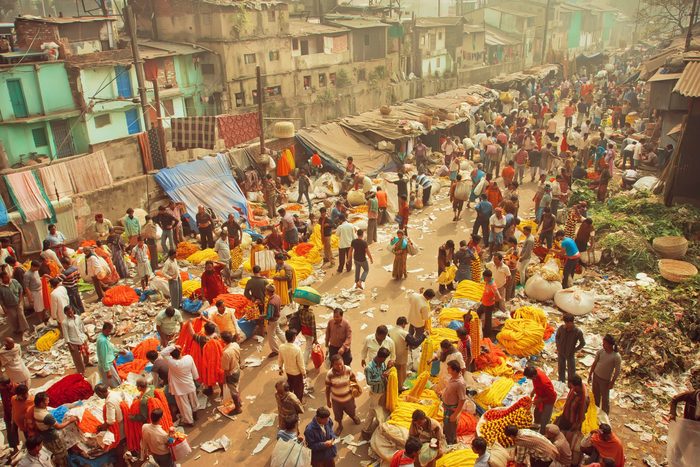
15. Kolkata, India
Current population: 14,850,066 people
India (1.3 billion) and China (1.4 billion) are the two most populous countries in the world, so it should come as no surprise that Indian and Chinese cities rank as some of the most crowded. Kolkata, a.k.a. Calcutta, a former East Indian Company trading post, as well as the headquarters of Mother Teresa’s Missionaries of Charity, is the third most inhabited metropolitan area in India—a trend that is slowing but, thanks to the increasing popularity of its suburbs, shows no signs of reversing any time soon. No matter what size your city is, we should all be emulating the nicest city in America.
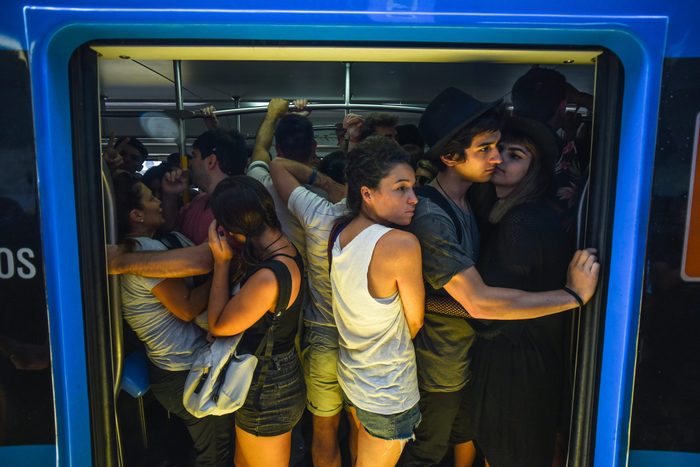
14. Buenos Aires, Argentia
Current population: 15,153,729 people
Although the capital city of Argentina has only 3 million people living within its urban core, its wider, 2,681-square-kilometer region is home to the second largest population in South America. Although the suburbs of the greater metropolitan region have burgeoned over the last 70 years, the city center has remained pretty constant, size-wise; its stagnant economy has meant that folks are more prone to move out of town than into it. The best cities that people move to usually have a strong economy, but the people living there actually define a city. Buenos Aires is also one of the world’s 50 most beautiful cities, as ranked by travel experts.
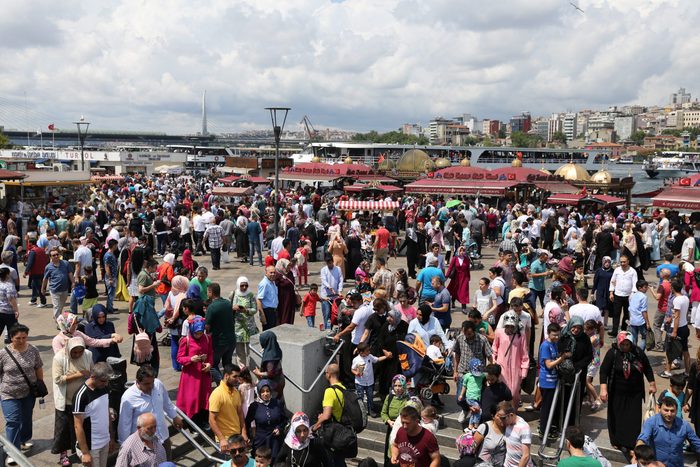
13. Istanbul, Turkey
Current population: 15,190,336 people
Istanbul, formerly Constantinople, ranks as the most populated city in all of Europe, although technically, half of the city lies in Asia. The city’s residents doubled their population in the 1980s when the parameters of its borders greatly expanded. It boasts the largest airport in the world—a lucky happenstance for one of the fastest-growing metropolises.
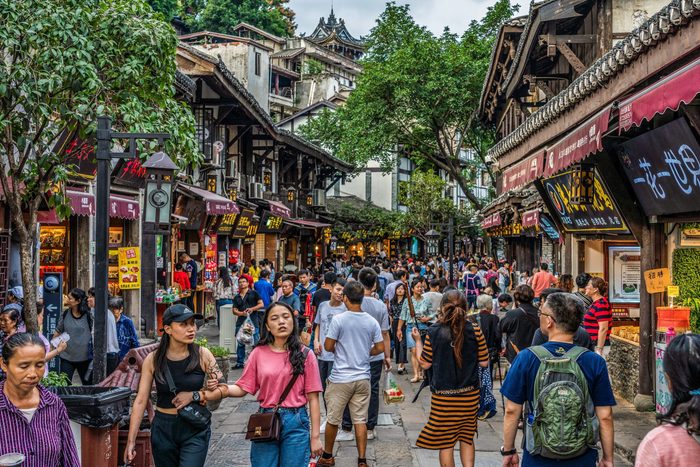
12. Chongqing, China
Current population: 15,872,179 people
Like many other cities in Asia, Chongqing has seen a big population spike—a hefty 3.3 percent since 2019. In fact, Chongqing is one of the fastest-growing cities in the world and, as World Population Review points out, that’s not fixing to change anytime soon. The city has another problem in addition to its rapid expansion: Its workforce is shrinking while its population ages—an odd and sobering fact to consider in conjunction with the total population of the Chongqing municipality, which currently stands at a staggering 33 million people. By contrast, these are the smallest towns in America by population.
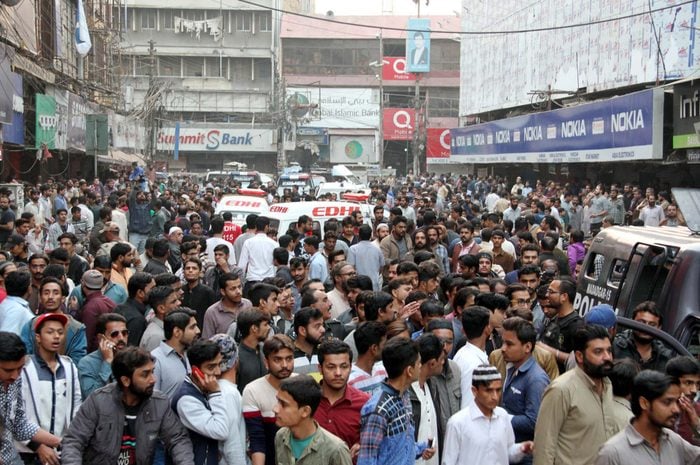
11. Karachi, Pakistan
Current population: 16,093,786 people
One-fifth of Pakistan’s urban population resides in Pakistan’s once-capital “megacity,” according to a report by the World Bank. While the number of its residents has soared—up 2.2 percent since 2019—its quality of life has been plummeting, with violent crime, inequality, and financial instability all contributing to developmental challenges. Karachi is also one of the world’s densest cities; it has 24,000 people living per square kilometer. If crowds this big make you uncomfortable, check out the best places to move in in the U.S. before they get too crowded.
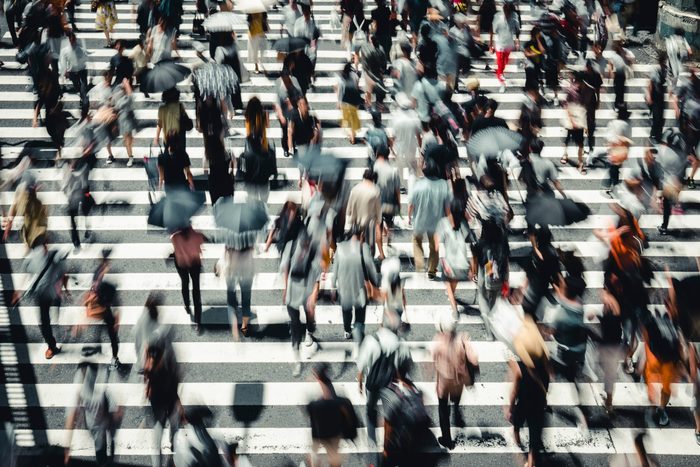
10. Osaka, Japan
Current population: 19,165,340 people
The number of people living in Japan’s food-centric and third-largest metropolitan area is actually decreasing—it’s dropped by .3 percent since 2019. But nearly 20,000 humans squeezed into the broader Kansai region (which includes the city of Osaka) of 27,000 kilometers makes for some tight living quarters. And in fact, 7 percent of Japan’s total population lives within an even smaller space in this region, in the city of Osaka proper and its 42 municipalities.
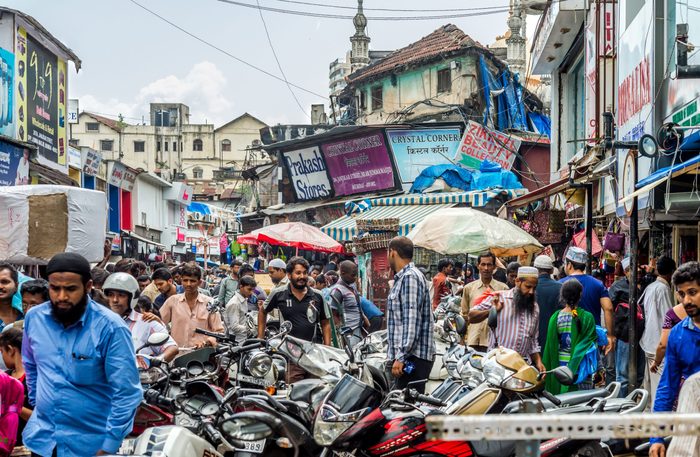
9. Mumbai, India
Current population: 20,411,274 people
India’s second-largest metropolitan area has its largest in-city population, with over 13 million at last official census count in 2011. Its trains alone carry 6 million people a day, a figure that puts almost every other busy city to shame. Mumbai’s population has surged in the past 20 years—and has in fact doubled since 1991—as migrants from rural areas move to town looking for work. The practical realities of this flux are grim: reports World Population Review, 41 percent of residents in Mumbai and its surrounding regions live in slums. If you’re looking for a silver lining, Mumbai may still be growing, but the rate is slowing. in 2019, Mumbai was the 8th city on this list. Another great thing about Mumbai, Reader’s Digest found it to be one of the most “honest” cities in the world.
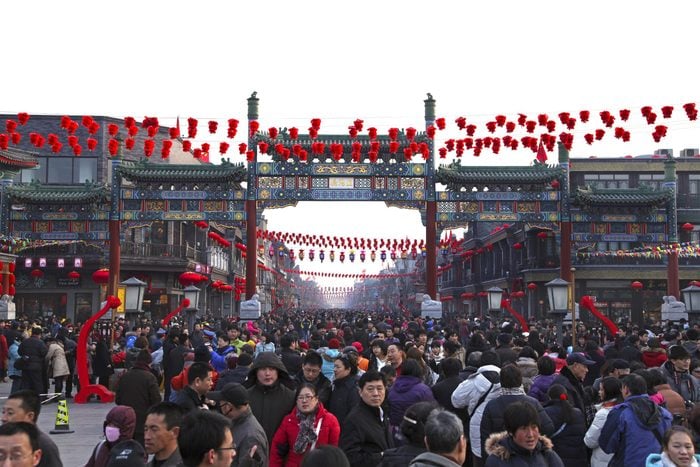
8. Beijing, China
Current population: 20,462,610 people
China’s second-largest municipality has almost as many residents as the entire country of Australia. And the population has not only been rising at a steady clip since 1975; it’s projected to keep on rising all the way through 2035, according to the UN World Urbanization Prospects report. One of the serious downsides to such a large population in an urban area: Beijing has some of the worst air for breathing, thanks to nearby polluting coal plants and to car traffic—measuring 52 microns per cubic meter, as reported by Reuters. Unfortunately, it’s also one of 11 major cities that are running out of water.
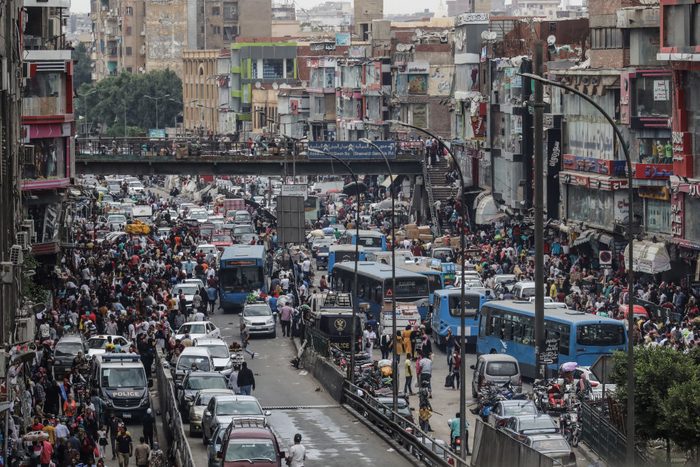
7. Cairo, Egypt
Current population: 20,900,604 people
Egypt’s capital city has been settled at least since the 4th century due to its important location on the Nile River. After plagues in the Middle Ages and city-destroying riots in the 1950s, it’s since been growing at a rapid pace. Even its core city population is staggeringly high—12 million as tallied by World Population Review. Alexandria, the second-largest city in Egypt, is a mere 30 percent of Cairo’s size. Of course, you don’t have to travel quite that far to reach a city rich with history. Try visiting one of the best American cities for history buffs, instead.
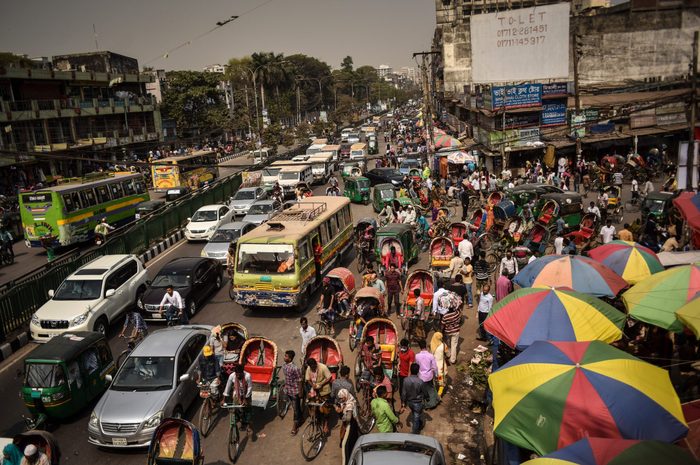
6. Dhaka, Bangladesh
Current population: 21,005,860 people
Business Insider called Dhaka the most crowded city in the world in 2018, and it’s only grown since then. With over 23,000 people per square kilometer and an incredible 2,000 people per day moving into Bangladesh’s capital city. The reason for the influx: pure and simple desperation, as climate change-exasperated natural disasters wreak havoc on their home towns and villages. Not surprisingly then, one-quarter of Bangladeshis live below the poverty line, with an estimated 3 million people living in the slums of Dhaka alone.
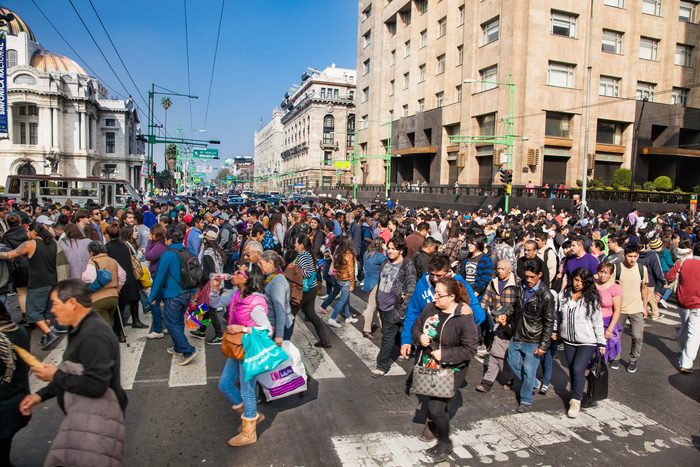
5. Mexico City, Mexico
Current population: 21,782,378 people
An economic powerhouse, Mexico City is also one of the most populous and densest in the world. In fact, 20 percent of the entire population of Mexico lives in Mexico City. Surges in growth have meant that the city has had a hard time keeping up with necessary services for its residents, like housing, but there is hope on that front. The population only grew by 0.5 percent from 2019 to 2020.
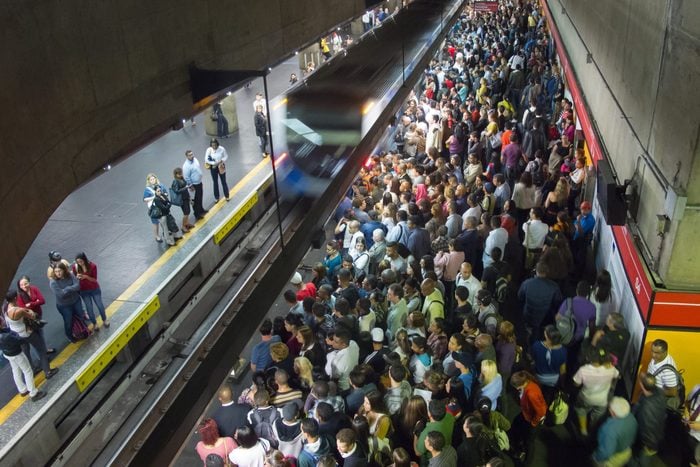
4. Sao Paulo, Brazil
Current population: 22,043,028 people
The most populous city in the Americas, with over 11 million people living in the city itself, is a sophisticated, ethnically diverse world cultural center that is also, oddly, according to Forbes, home to 26 billionaires. It’s also a city of immigrants—”81 percent of students said they were descendants of foreign immigrants,” writes World Population Review of a recent survey by the University of Sao Paulo. This metropolitan area is projected to reach 23 million by 2030.
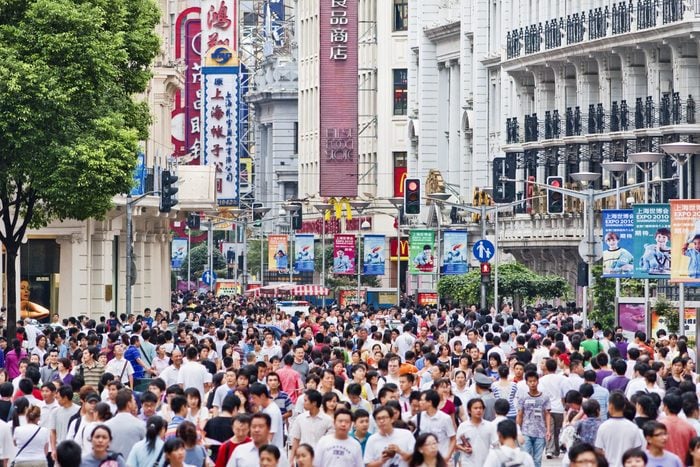
3. Shanghai, China
Current population: 27,058,480 people
Shanghai is the largest city proper in the world, and one of the fastest developing for 20 years, seeing “double-digit growth nearly every year since 1992, with the exception of the global recession of 2008-2009,” says World Population Review. And it’s still growing, even though the pace of that growth is slowing. Experts predict its greater metropolitan regions will hit 50 million residents by 2050, which is sure to exacerbate all the problems that come with dense cities, like insufficient infrastructure and pollution.
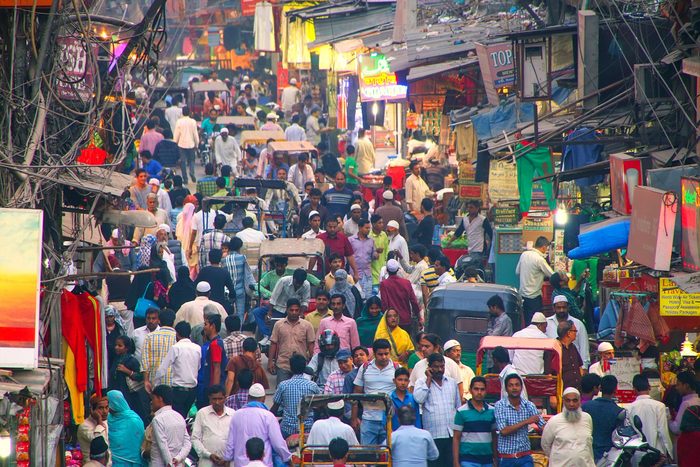
2. Delhi, India
Current population: 30,290,936 people
Delhi, India’s capital and the center of its government, is second in population and takes the lead in the most polluted cities in the world. It packs over 11,000 people into each of its 1484 square kilometers. And it’s growing faster than almost anyplace else on Earth. “In 2001 alone,” reports World Population Review, “its population increased by 215,000 due to natural growth and 285,000 through migration.” Its numbers increased this year by 3.03 percent over 2019 but it’s still on track to hit a population of over 43 million by 2035. A large contributor to why India will soon be the country with the highest population.
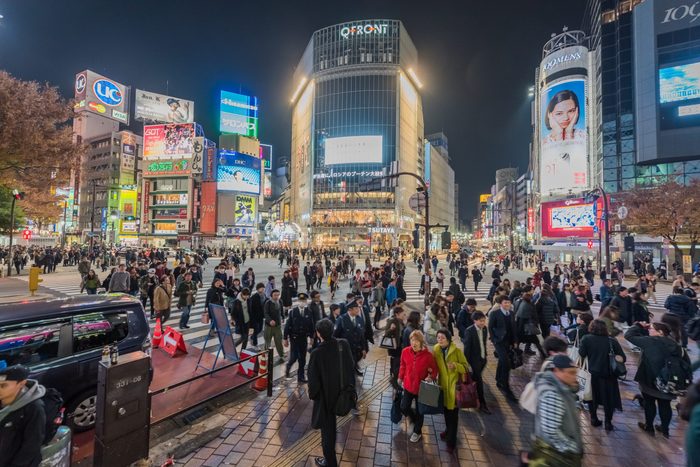
1.Tokyo, Japan
Current population: 37,393,128 people
Believe it or not, the largest city in the world actually saw a population drop of .11 percent from 2019. That trend is expected to continue and to increase through 2035, so that 16 years from now, Tokyo will house almost 1.5 million fewer people than it does today. Needless to say, this is the kind of population trend that would benefit the rest of the cities on this list!
Sources:
- World Population History
- United Nations: “World Population Prospects 2019”
- World Population Review: “World City Populations 2020”
- O Globo: “Rio is the city with the largest population in slums in Brazil”
- The World Bank: “Transforming Karachi into a livable and competitive megacity: a city diagnostic and transformation strategy (English)”
- United Nations: World Urbanization Prospects report
- Reuters: “China’s capital Beijing vows air quality improvement but gives no target”
- Business Insider: “Staggering photos show what daily life is really like in Dhaka, the most crowded city in the world”
- Forbes: “All You Need To Know About Sao Paulo, Brazil’s Largest City”
